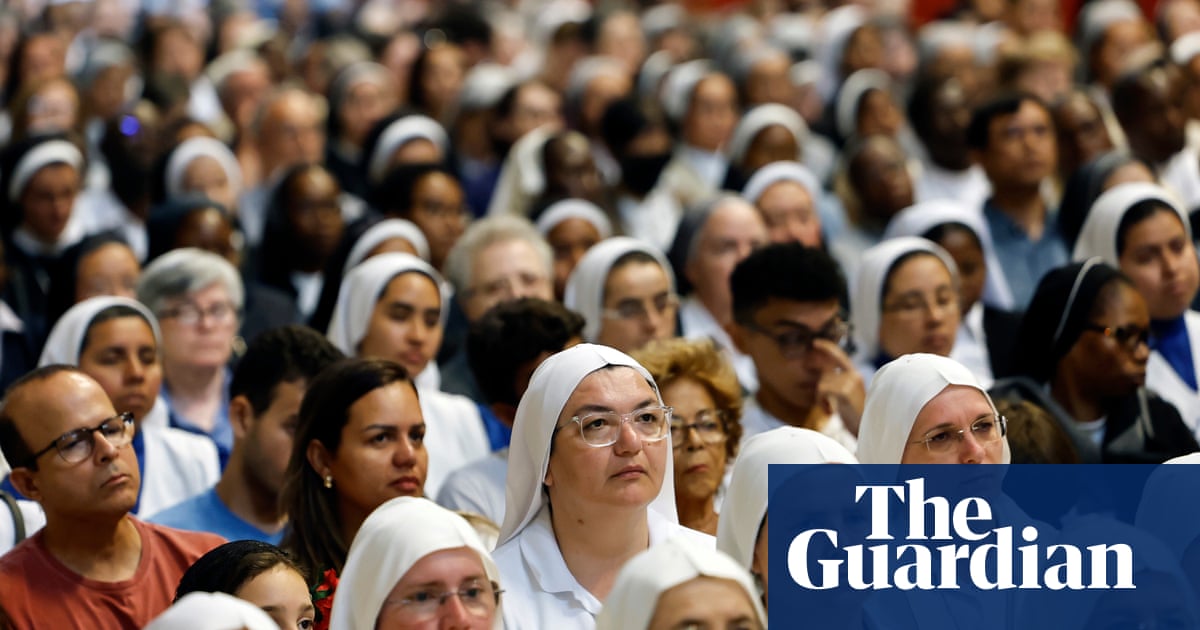Just a few days before he died,Pope Francismet nurses and medics from Rome’s Gemelli hospital, where for five weeks he had been treated for severe pneumonia, to thank them for their care.
Leading the group of 70 men and women was Elena Beccalli, who in June last year became the first female rector of Milan’s Catholic University of the Sacred Heart. The university’s health faculty in Rome has close ties with Gemelli.
“Thank you for the service in hospital, it was very good, keep it up,” Francis told the group, before turning to Becalli and adding: “When women are in charge, things go well!”
It was not the first time Francis had publicly praised the role of women, and throughout his 12-year papacy he made strides in boosting the female workforce in the Vatican while appointing several women into the top echelons of its governance. He also gave women the right to voteduring synods, the periodic Vatican summits involving the world’s bishops.
But in other areas, whether it be the handling of accusations of clerical abuse of nuns or his repeated assertions that women could never become priests, Francis leaves behind a disparate legacy.
That women are still mostly passive participants in the church was made clear by their absence during his funeral mass in St Peter’s Square among the mourners filling the seats surrounding the altar and front rows on the side of the pulpit reserved for Catholic church leaders.
Instead, nuns stood among crowds of pilgrims and tourists, mostly making do with following the service on TV screens.
Meanwhile, the theme of women has so far been missing from the discussion among cardinals as they share visions for the future of the church during their daily pre-conclave meetings, at least according to briefings given to the press by a Vatican official.
But as the men prepare to enter the Sistine Chapel to elect a new pope on Wednesday, all the while capturing the world’s attention, the onus will be on a team of women working behind the scenes to ensure everything goes well.
In a mission led by the sisters who manage Casa Santa Marta, the guesthouse where the 133 sequestered cardinal-voters will reside during the conclave, their task will be to cook for the men and clean their bedrooms. The nuns will also assist them in managing their daily needs, especially the more frail among them, while providing spiritual support for their electoral duty through prayer.
“It is the women who actually hold everything together,” said Gloria Branciani, a former nun. “But the Catholic church remains a patriarchal institution where women are barely even listened to.”
Branciani should know. She left the nunhood after allegedly being sexually abused for years – including being forced into having threesomes – byMarko Rupnik, a once-prominent Jesuit artist-priest who was friends with Francis.
Rupnik, who has been accused of abuse by at least nine women, was excommunicated in 2020 for absolving a woman with whom he had sex, only to be reinstated after he repented. Rupnik was finally expelled from the Jesuit order in June 2023 after the“degree of credibility”of the allegations against him was found to be “very high”. However, he remains a priest and is now based at a diocese in Koper, in his native Slovenia.
Branciani had long reported the abuse, but claimed she was never listened to. There was hope in 2019 when Francis became the first pontiff topublicly admitthat priests had sexually abused nuns, but he failed in his pledge to do more to fight the problem.
The Rupnik case is with the Dicastery for the Doctrine of the Faith, the Vatican body responsible for overseeing the church’s prosecution of serious crimes. But it has been slow to progress, with Rupnik’s alleged victims being told that judges were deterred from taking on the case because the women had spoken to the press.
“Gloria made the first complaint in 1993, and if it had been dealt with at that time we would never have needed to turn to the media … and how many victims would have been spared?” said Laura Sgrò, a lawyer representing Bracciani and other alleged victims, and the author of a recently published book about the case,Stupri Sacri(Sacred Rapes).
Sister Livia Angelillis, a nun based in Tuscany, said the problem of clerical abuse against nuns had always been there, “whether in a light or heavy form”. “They were afraid to speak out – nuns tend to view priests as Jesus on Earth,” she said. “But Francis’s acknowledgment has at least given more women the courage to report it.”
The major obstacle limiting the power of women in the church is the ban on them becoming priests. “They don’t have voices,” said Sgrò.
The battle for female priests has long been fought by the Catholic Women’s Ordination (CWO), a global organisation that challenges misogyny in the church. Pat Brown, a spokesperson for CWO, said that while Francis was “wonderful” in so many ways, he appeared to have a blind spot when it came to giving women “justice”. “There is absolutely no argument why women can’t be priests – it is misogyny,” she said.
Justice is exactly what Branciani would like to see from the next pope. “Words are all well and good but we need substance, starting with an immediate trial [against Rupnik]. But real reforms can only really begin once women can train to become priests.”
